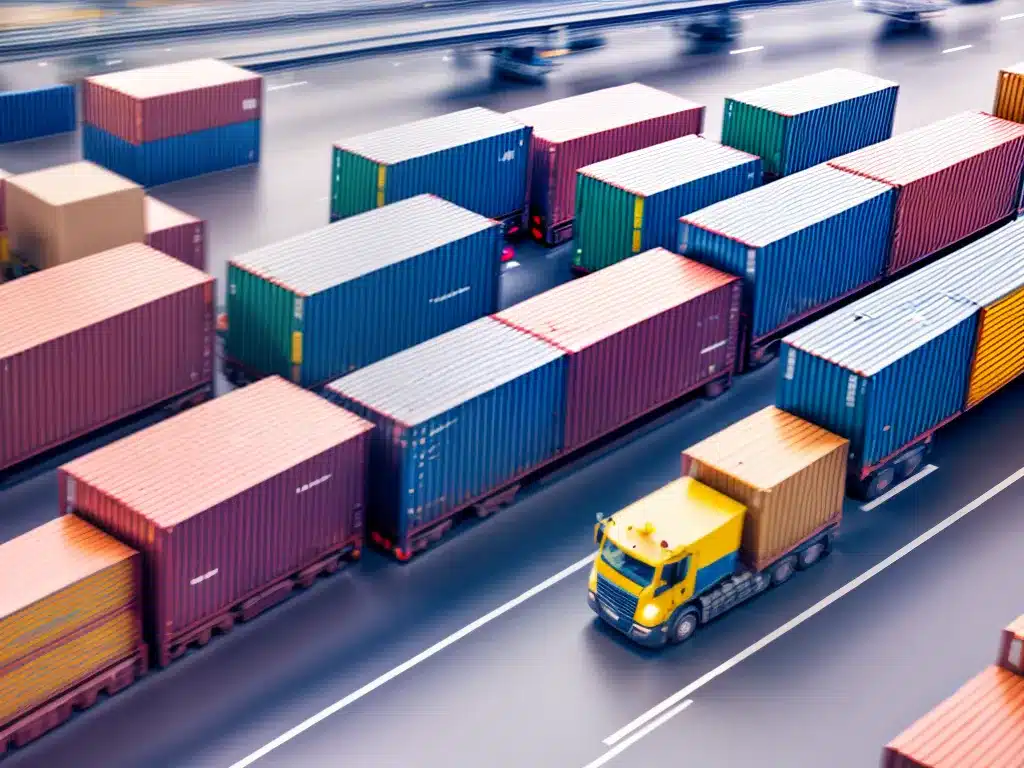
Transportation and Logistics Get Smarter with IoT in 2024
The transportation and logistics industry is on the verge of a major transformation thanks to the Internet of Things (IoT). By 2024, IoT applications will make the movement of goods and services faster, cheaper, safer, and more efficient than ever before. Here is an in-depth look at how IoT will impact transportation and logistics in the coming years.
How IoT is Changing Transportation and Logistics
IoT involves connecting vehicles, infrastructure, cargo, and enterprise systems using sensors, software, and wireless communications. This connectivity provides unprecedented data visibility across the entire supply chain.
Real-Time Tracking and Monitoring
IoT sensors on trucks, planes, trains, ships, and containers allow logistics companies to track assets in real-time across the supply chain. GPS tracking provides location data while other sensors monitor temperature, humidity, pressure, and more. This real-time transparency helps optimize routes, prevent cargo damage, and improve estimated times of arrival.
Advanced Fleet Management
Fleet managers rely on connected vehicles to monitor driver behavior, truck diagnostics, fuel consumption, and engine health. IoT connectivity prevents breakdowns, improves preventative maintenance, and decreases unsafe driving. This allows managers to maximize fleet utilization.
Automated Warehouses
Warehouses are using IoT sensors, scanners, robots, and software to automate inventory management. This includes automated picking, sorting, and packing of orders. IoT-enabled warehouses are more efficient, less prone to errors, and can operate with fewer staff.
Enhanced Last Mile Delivery
Last mile delivery is the final step in the supply chain. IoT gives couriers real-time updates on traffic, weather conditions, and customer availability. This allows dynamic routing and scheduling to complete more last mile deliveries.
Key IoT Applications in Transportation and Logistics
Smart Shipping Containers
Attaching sensors to containers allows remote monitoring of:
- Location and status
- Motion, shock, and tilt
- Temperature and humidity
This improves cargo visibility and prevent losses.
Fleet Telematics
Fleet telematics systems collect and transmit data points from vehicles and drivers including:
- GPS tracking
- Engine diagnostics
- Driver behavior
- Cargo sensors
This boosts fleet efficiency and safety.
Warehouse Management Systems
WMS utilizes IoT to automate warehouse operations including:
- Inventory tracking
- Stock management
- Order processing
- Equipment monitoring
This increases accuracy and speed.
Asset Tracking Solutions
Asset tracking uses ruggedized IoT sensors to monitor status of cargo, trailers, containers, pallets, and more. This prevents losses and damage.
Benefits of Adopting IoT in Transportation and Logistics
IoT adoption brings many benefits including:
- Increased supply chain transparency and visibility
- Optimized fleet usage and vehicle tracking
- Reduced fuel consumption and engine wear
- Minimized cargo damage, spoilage and loss
- Enhanced inventory management and warehouse efficiency
- Improved driver safety and accident reduction
- Faster delivery times and order fulfillment
- Better end-to-end asset monitoring across the full supply chain
- Data analytics for fact-based decision making
According to Allied Market Research, the global IoT in logistics market size will grow from $12.7 billion in 2020 to over $42.3 billion by 2027. This shows that major growth is expected in the coming years as more transportation and logistics companies embrace IoT.
Challenges in Implementing IoT
While promising, integrating IoT across global supply chains comes with challenges including:
- Ensuring full integration between disparate legacy systems
- Choosing the right sensors and IoT platforms
- Implementing cybersecurity best practices
- Analyzing massive data volumes generated by IoT sensors
- Managing power constraints for remote sensors and devices
- Accounting for connectivity deadzones in remote areas
- Developing data sharing agreements between partners
However, improvements in IoT software, predictive analytics, and energy harvesting will help address these challenges.
The Future is Bright for IoT in Transportation and Logistics
In summary, IoT represents the future for the global supply chain. The real-time insights, automation, and enhanced efficiencies enabled by IoT sensors will help transportation and logistics companies meet rising consumer demands. Companies that embrace IoT today will gain a competitive advantage and be best positioned to deliver smarter logistics in 2024 and beyond.












